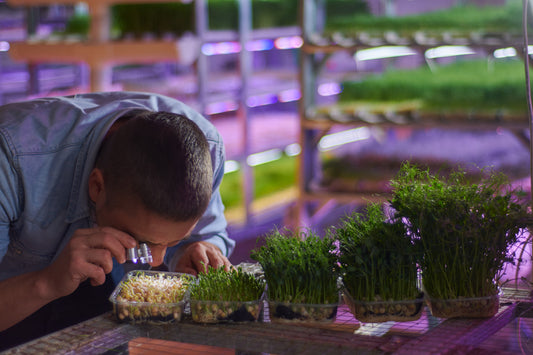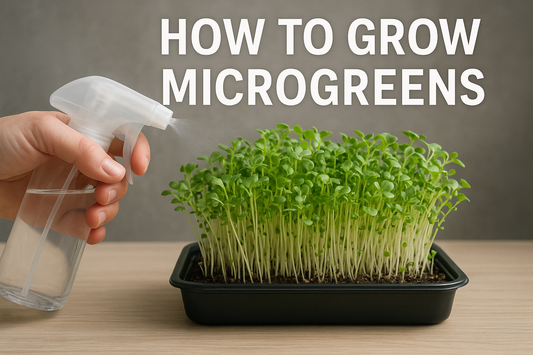
Sulforaphane in Broccoli Sprouts
Share
Introduction. In our pursuit of better health, we often look for complicated solutions, forgetting about the tiny superheroes growing right on our windowsill. Today we’re talking about a true champion in the world of microgreens – broccoli sprouts – and their secret weapon: sulforaphane. This isn’t just a trendy buzzword but one of the most researched and impressive natural compounds for supporting overall wellness.
What Are Broccoli Sprouts?
Imagine tiny, delicate shoots appearing just 3–7 days after sowing seeds. That’s exactly what broccoli sprouts are! They have a mild, slightly peppery flavor and look like thin green threads with small leaves.
Despite their miniature size, the concentration of beneficial nutrients in them is much higher than in mature broccoli. According to research from Johns Hopkins University, broccoli sprouts contain 20 to 50 times more glucoraphanin (which converts to sulforaphane) than mature florets. This means sprouting broccoli seeds is far more effective than eating hundreds of grams of the vegetable.
Broccoli vs. Broccoli Sprouts: Which Is Healthier?
The high concentration of glucoraphanin makes broccoli sprouts an exceptional source of sulforaphane. Just a small serving of sprouts can provide more of this valuable compound than a large serving of cooked broccoli. Plus, they are eaten raw, which helps preserve their nutrients.
The Benefits of Sulforaphane
Sulforaphane is a powerful compound that forms when we chop or chew broccoli sprouts. It belongs to the isothiocyanate group and has a range of unique properties that scientists around the world are actively studying:
- Powerful antioxidant and detoxifier – activates enzymes that help neutralize toxins.
- Immune support – helps strengthen the immune system, making the body more resilient to infections.
- Cell protection – supports the defense of cells against damage, which is important for preventing many chronic diseases.
- Heart health – research shows sulforaphane may help lower blood pressure and improve blood vessel function.
- Brain health – some studies link sulforaphane to improved cognitive function and protection of nerve cells.
By regularly adding broccoli microgreens to your diet, you’re supporting your body on multiple levels.
How Much Sulforaphane Is in Broccoli Sprouts?
The amount of sulforaphane can vary depending on the variety, growing method, and harvest time. On average, fresh broccoli sprouts contain 20–50 times more sulforaphane than mature broccoli, making them one of the richest natural sources of this compound.
How Many Broccoli Sprouts Should You Eat Per Day?
For general wellness and prevention, 1–2 ounces (30–50 grams) per day is enough – that’s about a handful of fresh sprouts. You can add them to salads, smoothies, sandwiches, or as a garnish.
How to Grow Broccoli Sprouts
The simplest method is to grow your own broccoli microgreens at home. You’ll need:
- High-quality broccoli sprouting seeds.
- Clean water.
- A jar or sprouting container.
- Cheesecloth or a fine mesh.
- A bright, warm spot.
Soak the seeds for 6–8 hours, then rinse and place them in a jar covered with cheesecloth. Rinse twice daily, and within 3–4 days you’ll have fresh broccoli sprouts ready to eat.
Conclusion
Broccoli sprouts are small but incredibly powerful. They deliver a high concentration of sulforaphane, boost immunity, protect cells, and support heart and brain health. If you want a simple, natural way to improve your diet, start with adding fresh broccoli microgreens to your meals.
Where to Buy Broccoli Sprouting Seeds and Supplies
At Green Chief, we offer everything you need to grow broccoli sprouts at home. Our catalog includes certified sprouting seeds with excellent germination rates, so your broccoli microgreens are as nutritious and dense as possible. We also offer starter kits, fertilizers, substrates, trays, and other accessories to make growing microgreens easy and enjoyable.











